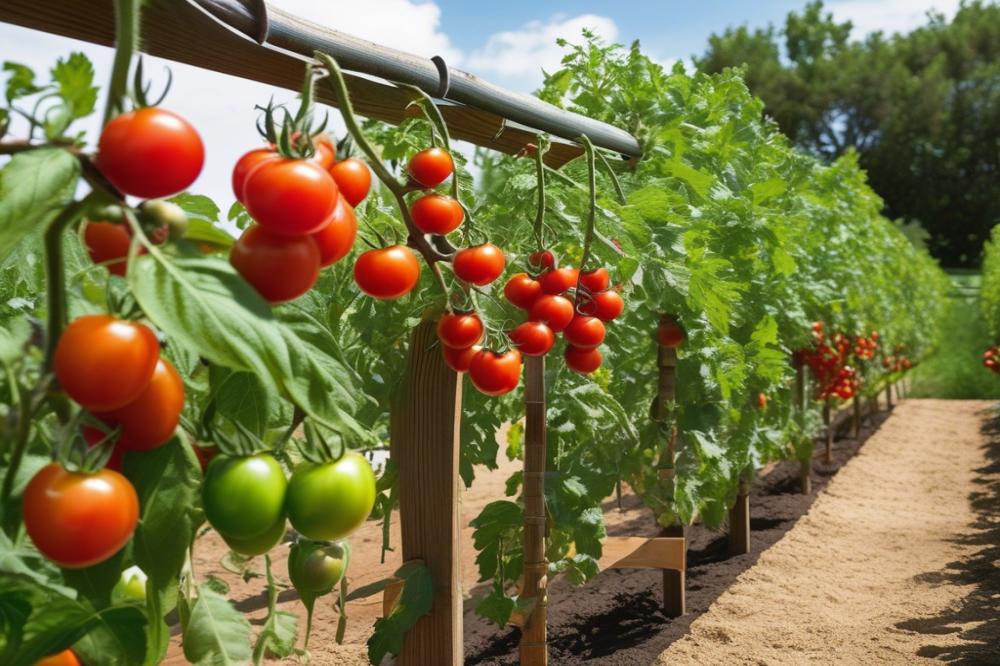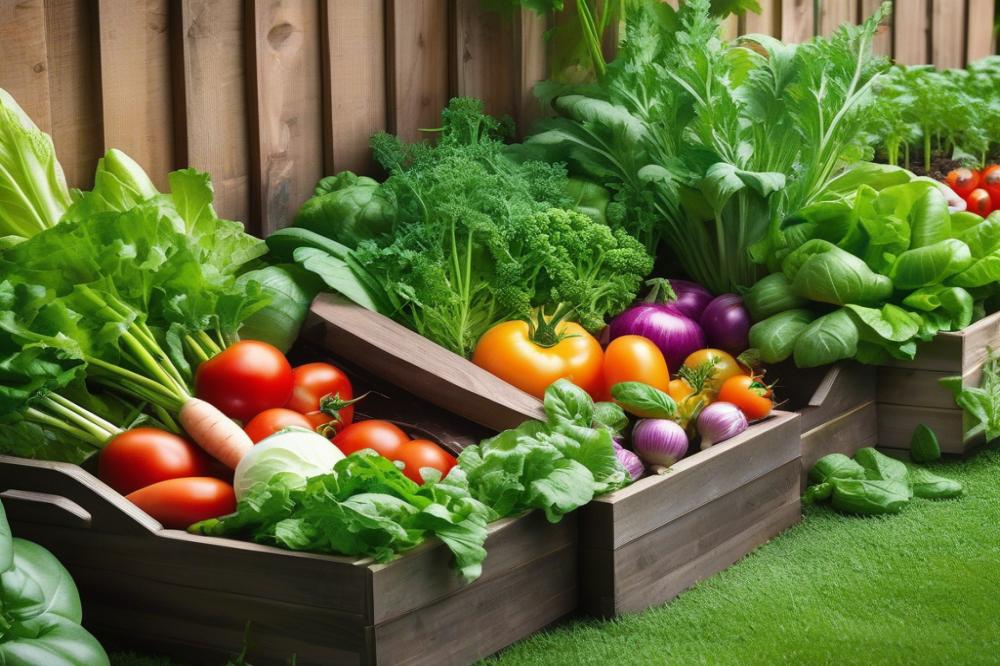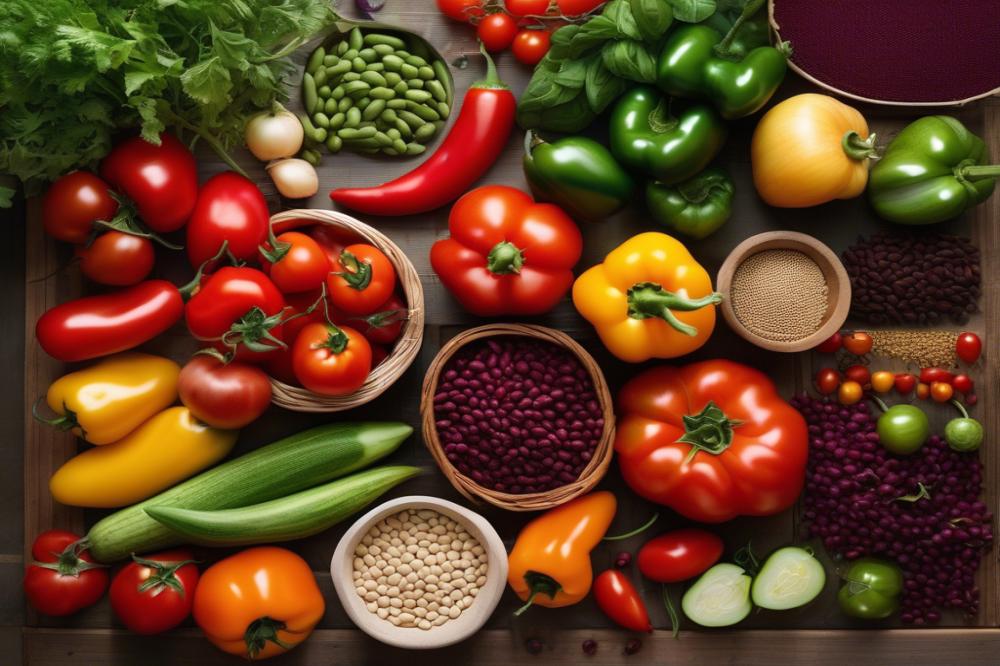The Benefits of Growing plum tomatoes for sauces and preserves
home gardening has surged in popularity over the years. Many people find joy in cultivating their own plants. This trend allows individuals to embrace a healthier lifestyle while enjoying the fruits of their labor. Among various garden choices, tomato cultivation stands out. The vibrant colors and versatility of tomatoes make them a favorite for many.
plum tomatoes, in particular, are an excellent choice for anyone interested in making sauces and preserves. Their thick flesh and fewer seeds result in a rich texture perfect for culinary uses. This makes them ideal for crafting delicious homemade tomato sauce or tasty preserves that can be enjoyed year-round.
Nutritional benefits come into play as well. When incorporated into daily meals, these tomatoes provide essential vitamins and minerals. They can be rich in antioxidants, supporting a healthy diet. Growing heirloom varieties can add an extra layer of flavor and uniqueness to your garden. Gardening tips can further aid you in achieving a high crop yield, ensuring a bountiful harvest.
For those engaged in organic farming, cultivating these fruits can be immensely satisfying. Not only do they thrive with the right care, but they also contribute positively to the environment. As you embark on the journey of preserving fruit, you will discover new ways to enjoy this delicious addition to your garden.
The Advantages of Plum Tomatoes


The characteristics of plum tomatoes make them a favorite among home gardeners and chefs alike. Their low moisture content is significant. This trait allows for thicker sauces without too much added liquid. A rich flavor profile adds to their appeal for culinary uses. When cooked down, they create a deep, savory taste that enhances dishes. Many prefer these fruits for canning and preserving because of these qualities.
Heirloom varieties also hold a special place in tomato cultivation. Many gardeners appreciate their unique colors and shapes. Some popular heirloom types, such as San Marzano and Roma, are known for their robust flavor. These varieties not only yield a significant crop but are also rich in nutrients. Choosing these options can lead to better overall health when included in the diet.
Gardening tips often emphasize the importance of selecting the right type of tomato for sauces. Organic farming practices are becoming more common, adding a layer of appeal to home growers. By growing their own, individuals can enjoy fresh produce while avoiding chemicals. This not only promotes better health but also supports sustainable agriculture in their communities.
The enthusiasm for growing tomatoes comes from their versatility. Home chefs use them in a variety of dishes, from pasta sauces to salsas. Furthermore, the act of preserving fruit in the form of sauces, jams, or canned goods can be a rewarding experience. Many families cherish the tradition of preparing and enjoying homemade meals throughout the year.
Essential Gardening Tips for Growing Plum Tomatoes


growing tomatoes is a rewarding experience for home gardening enthusiasts. Start with soil preparation, which is key for healthy plants. Choose a well-drained plot rich in organic matter. Adding compost will improve soil structure and provide nutrients. Soil pH should ideally be between 6.0 and 6.8 for optimal growth.
When it comes to planting techniques, place seeds or young plants in rows about 24 to 36 inches apart. Dig a shallow hole and gently place the plant in, covering it with soil up to its first set of true leaves. This promotes a stronger root system. Water the plants generously right after planting, but avoid overwatering.
Optimal Growing Conditions
Sunlight is crucial for tomato cultivation. Aim for at least six to eight hours of direct sunlight daily. A sunny spot will yield better crops and enhance flavors. While growing, monitor the temperature. Tomatoes thrive in warm conditions; daytime temperatures between 75°F and 85°F are ideal.
Provide adequate spacing between your plants to allow for air circulation. This practice helps prevent diseases, ensuring healthy plants. Mulching around the base can keep the soil moist and discourage weeds. Organic mulches like straw or grass clippings work well.
Organic Farming Practices
Using organic farming methods can significantly benefit your crop yield. Fertilizers made from natural ingredients supply essential nutrients. For example, fish emulsion or seaweed extract can give a boost to growth. Pests can also be managed organically. Introduce beneficial insects like ladybugs, or use neem oil as a natural pesticide.
Consider growing heirloom varieties for unique flavors and increased nutritional benefits. These types often produce better-tasting fruit and can be quite resilient. Explore various seed options and choose varieties that fit your local climate.
Culinary uses of the fruit are vast. Plum tomatoes are perfect for sauces and canning as they have fewer seeds and thicker flesh. Preserving fruit at its peak ensures delicious meals throughout the year. Whether it’s a homemade marinara or sun-dried tomatoes, the enjoyment is endless with home-grown produce.
Harvesting and Crop Yield


Harvesting plum tomatoes is an exciting phase in home gardening. Knowing when to pick them maximizes flavor. Aim to harvest when the tomatoes are deep red and slightly soft to the touch. This usually occurs during the late summer to early fall. Observing the size and color is crucial. Each variety may have its peak harvest time, so keep that in mind.
Timing matters greatly. When tomatoes are allowed to ripen completely on the vine, their sweetness intensifies. However, waiting too long can lead to overripe fruit, which might attract pests or spoil rapidly. A simple sniff can help too. Ripe tomatoes emit a fragrant aroma, signaling their readiness for picking.
In terms of crop yield, several factors will influence productivity in your garden. Soil quality plays a vital role. Nutrient-rich soil fosters healthy plants, while poor soil can limit growth. Regular watering, especially during dry spells, is essential. Be mindful of overwatering, which can lead to root rot.
Tomato cultivation also benefits from good sunlight. Aim for at least six to eight hours of direct sunlight daily. Different heirloom varieties may vary in their light needs, adding a layer of complexity to your gardening efforts. If possible, consider rotating your crops each year. This helps maintain soil fertility and reduces disease issues.
Another aspect to consider is pest management. Healthy plants are better able to resist insects and diseases. Use organic farming methods whenever feasible. This approach protects the environment and enhances the nutritional benefits of your harvest. A careful eye can catch potential issues early, saving your crop yield from disaster.
Preparation for culinary uses begins even before harvest. Gather your supplies for canning and preserving fruit as they ripen. Implementing proper storage techniques ensures you enjoy your harvest long after the growing season ends. Keeping plump tomatoes cool and dry can extend their shelf life, making your efforts worthwhile.
By following these gardening tips, you can enjoy a fruitful harvest full of flavor. Knowing when to harvest and how to care for your plants will lead to a rewarding experience. Embrace the process, and you’ll reap the benefits in the kitchen.
Culinary Uses for Plum Tomatoes
Plum tomatoes are popular for various reasons, especially in home gardening. Their firm texture holds up well in cooking. This makes them perfect for sauces. Cooking enthusiasts often use them to create rich, flavorful sauces that enhance pasta dishes and pizzas. Consider a simple marinara sauce with olive oil, garlic, and fresh herbs. Simmering these ingredients creates a delightful aroma that fills the kitchen.
For preserving fruit, plum tomatoes excel in canning. Preserving them allows for enjoyment even in the winter months. Making homemade canned sauce can be a rewarding experience. Start with a basic recipe that includes chopped onions and garlic sautéed in olive oil. Add diced tomatoes slowly. Let them bubble together for a full flavor burst. Once cooked, blend until smooth, season with salt and pepper, and pour into sterilized jars. This technique is a staple of organic farming.
In addition to sauces, plum tomatoes shine in a variety of dishes. They can be roasted, grilled, or even eaten fresh. Chopping them finely and mixing with cucumbers, onions, and herbs makes a refreshing salad. This dish highlights the nutritional benefits of tomatoes. Many people appreciate their rich vitamin content.
Culinary creativity with plum tomatoes doesn’t end at sauces. They can also be transformed into rich, thick preserves. For a unique take, try making a tomato jam. Start with diced tomatoes, sugar, and lemon juice. Cook until it reaches a syrupy consistency. This sweet treat pairs beautifully with cheese or on toast.
When diving into tomato cultivation, gardeners should pay attention to heirloom varieties. These come with unique flavors that can elevate any recipe. Some heirloom types have tender skins and sweeter flesh. Choosing the right variety can significantly impact taste. Consider growing them in a sunny spot for the best crop yield.
Gardening tips specific to plum tomatoes involve careful watering and nutrient management. Consistent moisture is crucial, but avoid waterlogging. A well-drained soil will keep plants healthy. Mulching around the base can help retain moisture and reduce weeds.
Utilizing plum tomatoes in the kitchen opens up a world of flavor and creativity. From sauces to preserves, they offer versatility like few other fruits. Experimenting with cooking techniques is part of the joy they bring. With patience and practice, a home cook can master dishes that impress friends and family alike.
Canning and Preserving Plum Tomatoes
Canning and preserving fruit is a time-honored method to store your summer harvest. The process is simple and rewarding, especially for those who engage in home gardening. To get started, gather your plum tomatoes. Opt for ripe and firm ones for the best results. Clean them well to remove any dirt or residue.
After washing, you can decide whether to peel them. Some prefer to leave the skins on for added texture. Use a sharp knife to cut an ‘X’ at the bottom of each tomato. Blanch them in boiling water for about 30 seconds, then transfer to an ice bath. This helps the skin slip off easily.
When preparing for canning, consider using heirloom varieties. They often have rich flavors, making your sauces and preserves more delightful. In a large pot, you will need to cook the tomatoes down with a bit of salt and perhaps some herbs. This enhances the taste while also reducing the volume. Remember that crop yield affects how much you can make, so plan accordingly.
Next comes the canning process itself. Sterilize your jars in hot water to kill any bacteria. Fill each jar with the prepared tomatoes, but leave a little space at the top. This space is important to allow for expansion during the canning process.
Once filled, place lids on the jars and screw on the rings. Submerge the jars in a canner or large pot of boiling water. Make sure the water covers the jars completely. Boil for the recommended time based on your altitude and jar size. This step is crucial for safely preserving fruit.
Cool the jars on a clean towel after boiling. Listen for the satisfying ‘pop’ of the lids sealing. Store your canned tomatoes in a cool, dark place. This will keep them safe for future culinary uses.
Various preservation methods exist, including freezing or drying. Freezing is easier, but it may alter the texture. Drying emphasizes flavor concentration and can be done in the sun or with a dehydrator. Whichever method you choose, be sure to label your jars or bags with dates.
Gardening tips can help improve crop yield. Nutritional benefits of tomatoes encourage many to grow their own. Organic farming practices can also yield healthier plants and tastier fruit. Enjoy the fruits of your labor all year round with these preservation techniques.
Nutritional Benefits of Plum Tomatoes
Eating plum tomatoes offers numerous health advantages that can enhance nutritional quality in our diets. They are rich in essential vitamins like vitamin C, which plays a crucial role in boosting the immune system. Additionally, these tomatoes contain vitamin A, essential for maintaining good vision and skin health. Folate, another important nutrient found in these fruits, contributes to overall cellular function.
Dark red in color, plum tomatoes signal the presence of lycopene, a powerful antioxidant. This compound may reduce the risk of certain diseases and promote heart health. Research shows that incorporating lycopene-rich foods can lower levels of bad cholesterol, helping to keep the heart strong. Moreover, dietary fiber in these tomatoes aids digestion and can help maintain a healthy weight.
Using heirloom varieties can be particularly beneficial. They often have unique flavors that enhance culinary uses in various recipes. Home gardening also provides an excellent opportunity to grow these rich fruits sustainably. Picking ripe tomatoes fresh from the garden results in healthier meals while supporting organic farming practices.
Canning and preserving fruit allows you to enjoy their benefits year-round. The crop yield from growing these tomatoes can often be high, making them an economical choice for family meals. Gardening tips suggest focusing on well-drained soil and adequate watering for the best flavor and nutrient retention. Each harvest can contribute not just to nutrition but also to a fulfilling gardening experience.
Final Thoughts on Growing Plum Tomatoes
Home gardening offers an exciting opportunity to cultivate a staple ingredient like plum tomatoes. These varieties are especially favored for making sauces and preserves, as they yield a rich flavor that enhances any dish. Their low water content means they cook down nicely, resulting in thick, hearty sauces that can elevate your meals. Moreover, having fresh tomatoes on hand allows for more creativity in the kitchen.
Nutritional benefits also play a significant role in their appeal. Tomatoes are packed with vitamins and antioxidants, making them a healthy addition to your diet. By growing your own, you not only control the growing process but also taste the difference between store-bought and home-grown produce.
Think about the satisfaction of preserving your harvest. Homemade tomato sauce can be stored and enjoyed long after the growing season ends. Jars of fresh sauce lined up in your pantry can provide comfort and a burst of flavor during winter months.
Consider adding these versatile plants to your garden. They demand relatively little space and can even thrive in containers. Tomato cultivation can transform the way you approach cooking and preserving food. Ultimately, this rewarding endeavor enhances both your culinary experiences and your health.



